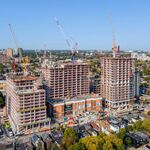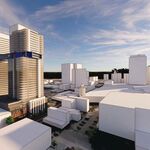Decking over is not development. I already agreed that much had been decked over with grass or parking but if one looks at all the subway built originally as a trench, very little has actual development on top of it.
What do you mean? Take a look at the huge swath of Yonge north of Rosedale that is totally developed; about 30 years ago, there was a big trench there with a subway.
And you're right, decking over is
not the same as development. I've already said, part of the B-D was cut and covered, where they essentially dug a trench, then filled it over. They turned most of that into parks and parking lots, and I don't think the established community would be very happy to give up their parks or parking lots to mid rise condos.
Compare that to the portion of Yonge between Bloor and St. Clair, where they literally left it as a trench for developers to build over. Now, a large portion is
developed over, with condos and pretty stores and everything. The area around Rosedale is not developed because it's in fact very hard to develop in that area, let alone doing it to give proper space to the subway underneath. There's only one road serving it (Rosedale Valley Road,) which wouldn't serve the corridor very well, and it's on a rather steep incline. Put on top of that what'd probably be a pretty bit of neighborhood opposition to development north of Rosedale station.
No. Read your history books. Most of the Yonge line north of College was originally built as trench. The cut-and-cover sections are different and they shouldn't be any more difficult to develop either.
If I'm not mistaken, the area south of Bloor was basically entirely cut and cover; they dug under the road and built the subway there, then paved back over. If I'm not mistaken, that's why there are all the vents on Yonge south of Bloor.
Frankly, that'd be too much of a hassle in a modern car-dependent world, and would be absolutely terrible for such a widely used road such as Eglinton.
By keeping the subway under the ROW you maximize the development potential and reduce the land assets that need to be owned by the city.
To be honest, I don't think having a trench to deal with would be much of a problem for potential developers. Especially since they could probably get away with only taking up half the ROW with such a trench, I don't think there's much of a difference. On the pro side, you don't have to worry about a) huge tunneling costs or b) disturbing traffic by cut and covering, as well as the costs associated by either building another traffic corridor and covering over the subway.
I think that with the corridor right there, already city-owned and ripe for development, a cost-saving trench is a great compromise/answer. Lets the corridor get covered over without any government funding (or at least most of it with little funding,) and really wouldn't have a huge impact on the community (the closed houses being well off the corridor and would get minimal if not any disturbances.)




